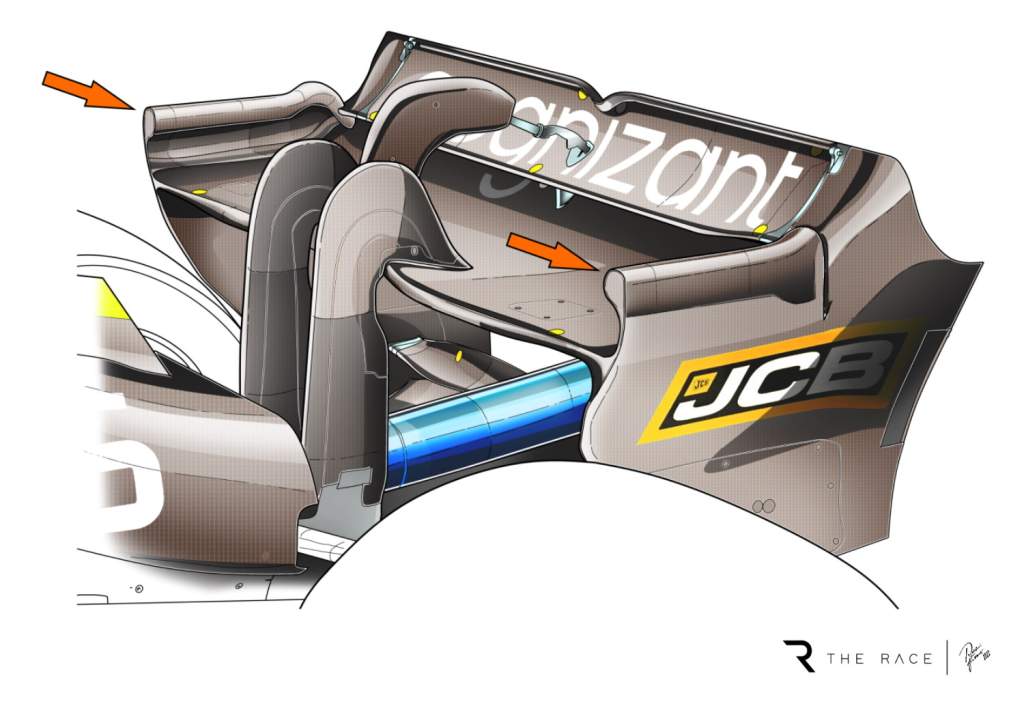Up Next

The elaborate rear-wing endplate design Aston Martin introduced at the Hungarian Grand Prix proved to be one of the most eye-catching innovations of the 2022 Formula 1 season.
But the team was not in any doubt about its legality, having worked closely with the FIA to ensure it was considered acceptable.
As part of the 2022 regulations, the rear wings were simplified and the FIA created designs in which the mainplane transitioned smoothly into the endplate, which could only stretch below the wing surface. But Aston Martin has now created a more complex design that effectively recreates the endplate.
There are no concerns about the rear-wing geometry being illegal. It fulfils all the required location and radius demands, even if it does make for a more complex endplate than perhaps intended thanks to the innovative way those radius of curvature regs have been applied.
But in Article 3, the 32-page section of the technical regulations governing aerodynamic components, there is an over-arching principle that allows compliance with the objective of the rules to be checked.
Article 3.2.1, which falls under the heading of ‘general principles and legality checking’ states that: “An important objective of the Regulations in Article 3 is to enable cars to race closely, by ensuring that the aerodynamic performance loss of a car following another car is kept to a minimum. In order to verify whether this objective has been achieved, Competitors may be required on request to supply the FIA with any relevant information.”
This is significant because the more complex geometry of the endplate area will generate more vortices that could combine into a larger, more powerful one. This could potentially have a negative effect on the wake characteristics of the car and worsen the downforce loss of the car behind.
As preventing that was a key objective of the regulations, there were suspicions the FIA could choose to clamp down on the design.
Aston Martin indicates there has been no suggestion this will happen, with the FIA green-lighting the design for this year. But it is possible the rules could be tightened up in 2023.
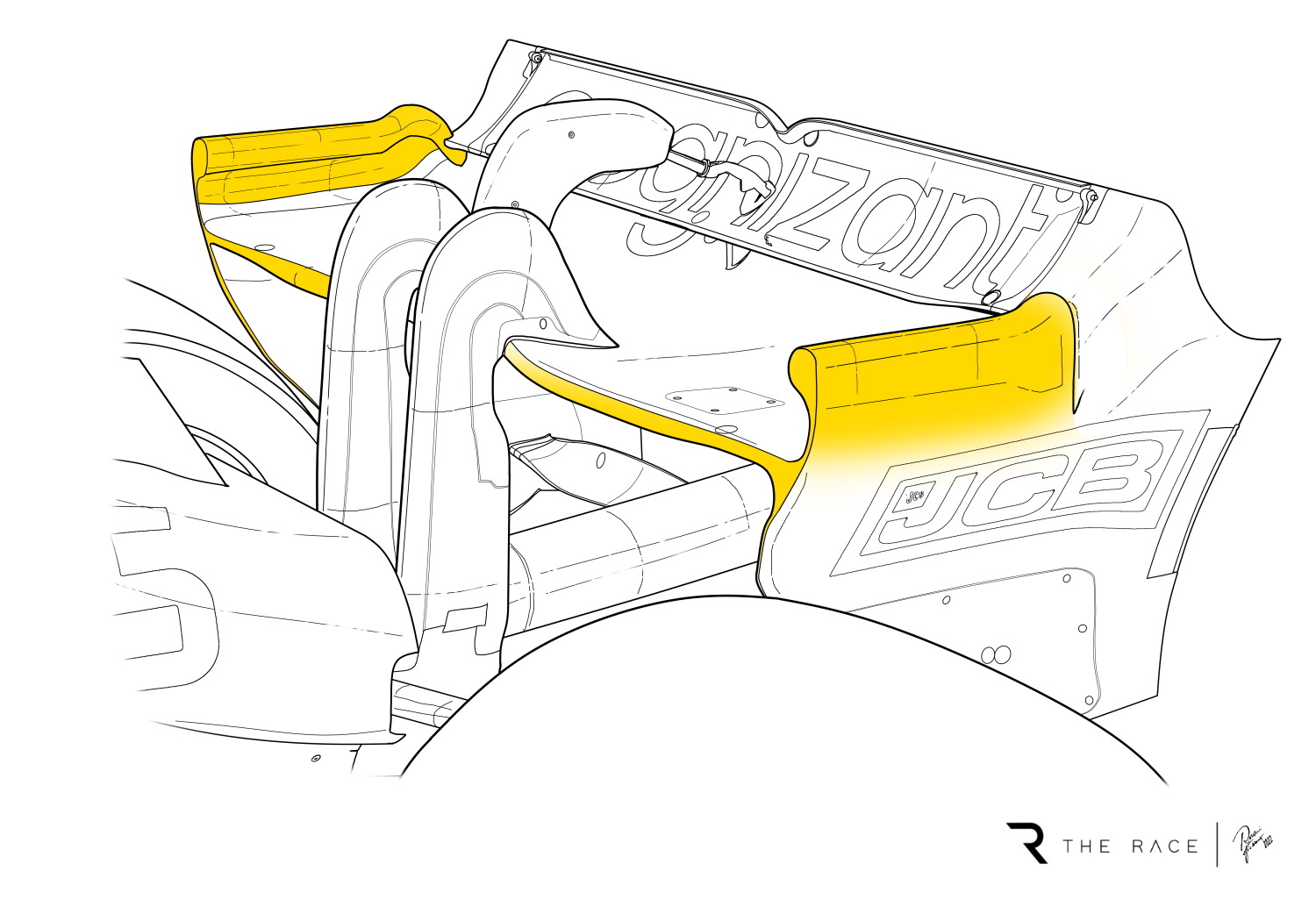
“We spent months from our initial interpretation and understanding toing-and-froing with the FIA technical department,” said Aston Martin performance director Tom McCullough when asked about the process it went through to ensure the design is legal.
“Once we’ve gone through several loops toing-and-froing and we got to a point where they agreed that we had satisfied all the technical regulations, we then decided to make it.
“Which is why it’s taken a while for it to get to the track, because it took several months from the first contact to full approval from the FIA and then once you in theory get the approval, we design and manufacture it.
“And you submit all the designs pre-weekend and then again the FIA has to make sure it’s still happy with it all, which they did. And then you can bring it to the car.”
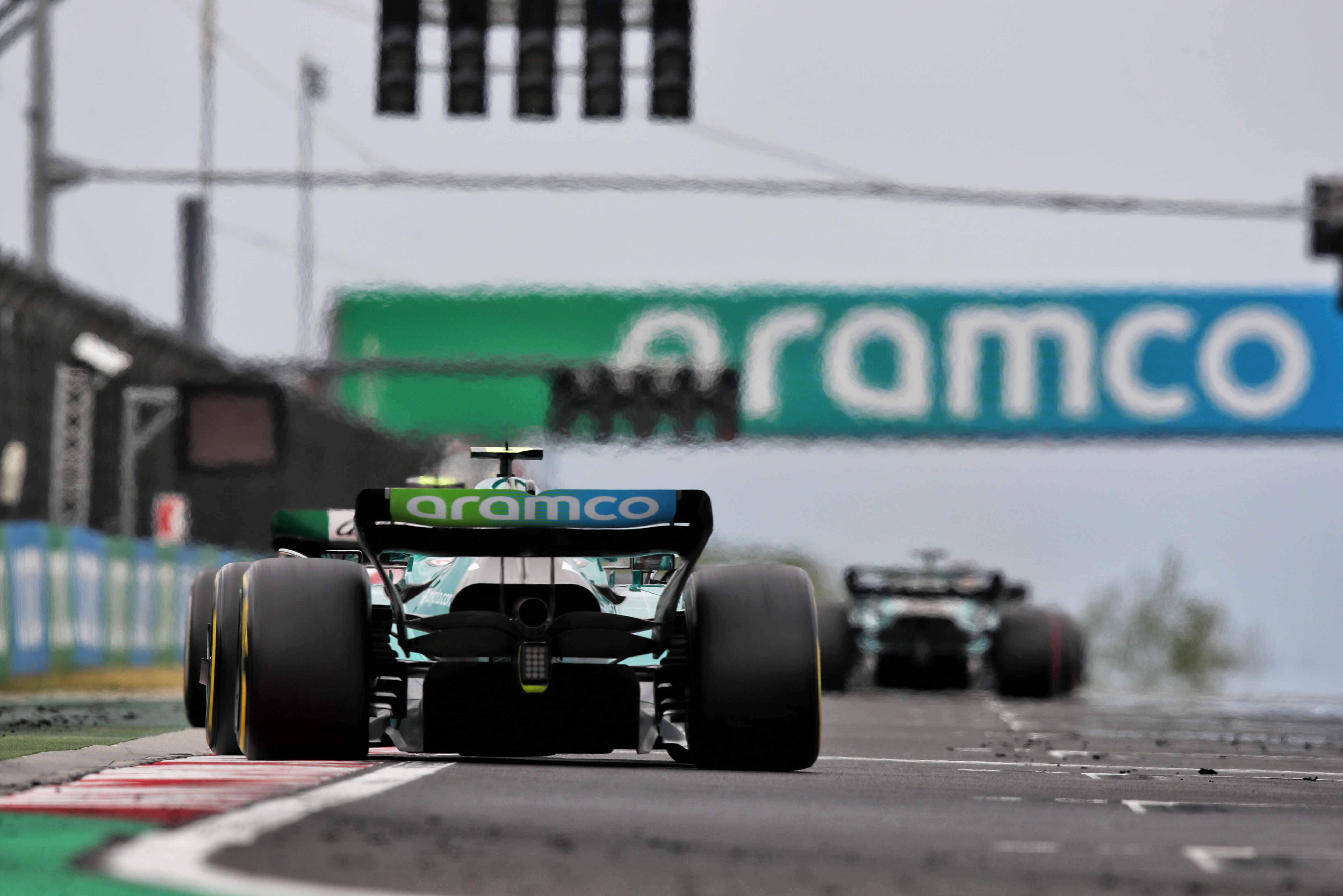
McCullough confirmed that the wake characteristics of the new design were evaluated as part of the process.
The FIA will have studied the team’s own simulations, and also has the capacity to perform its own analysis to verify any findings.
“That was part of us making sure that it was OK, because the intent of the rules is that,” said McCullough when asked by The Race whether the design is contrary to the intent of the regulations
“But we were able to show with simulations that it doesn’t have a material effect on that at all.
“The whole philosophy of the car is [the] dominant [factor], that is such a small feature of it.”
With the Aston Martin design first breaking cover at the Hungaroring, rival teams will now be evaluating the concept. As Mercedes trackside engineering director Andrew Shovlin said last weekend: “We will look into this design, probably next week”.
Alpine sporting director Alan Permane suggested every team would at least take a look at the concept and that anyone who can extract the necessary performance from the design will adopt it.
“I promise you there’s nine other teams running that in CFD at the moment and if it’s quicker, you’ll see nine more of them I imagine,” said Permane when asked about the compatibility of the design with the intent of the regulations.
“I can’t see why that wouldn’t happen if it’s completely legal. I get your point about the intent of the regs but we just want to go fast and be reliable so that’s really for the FIA and Formula 1 to work out.
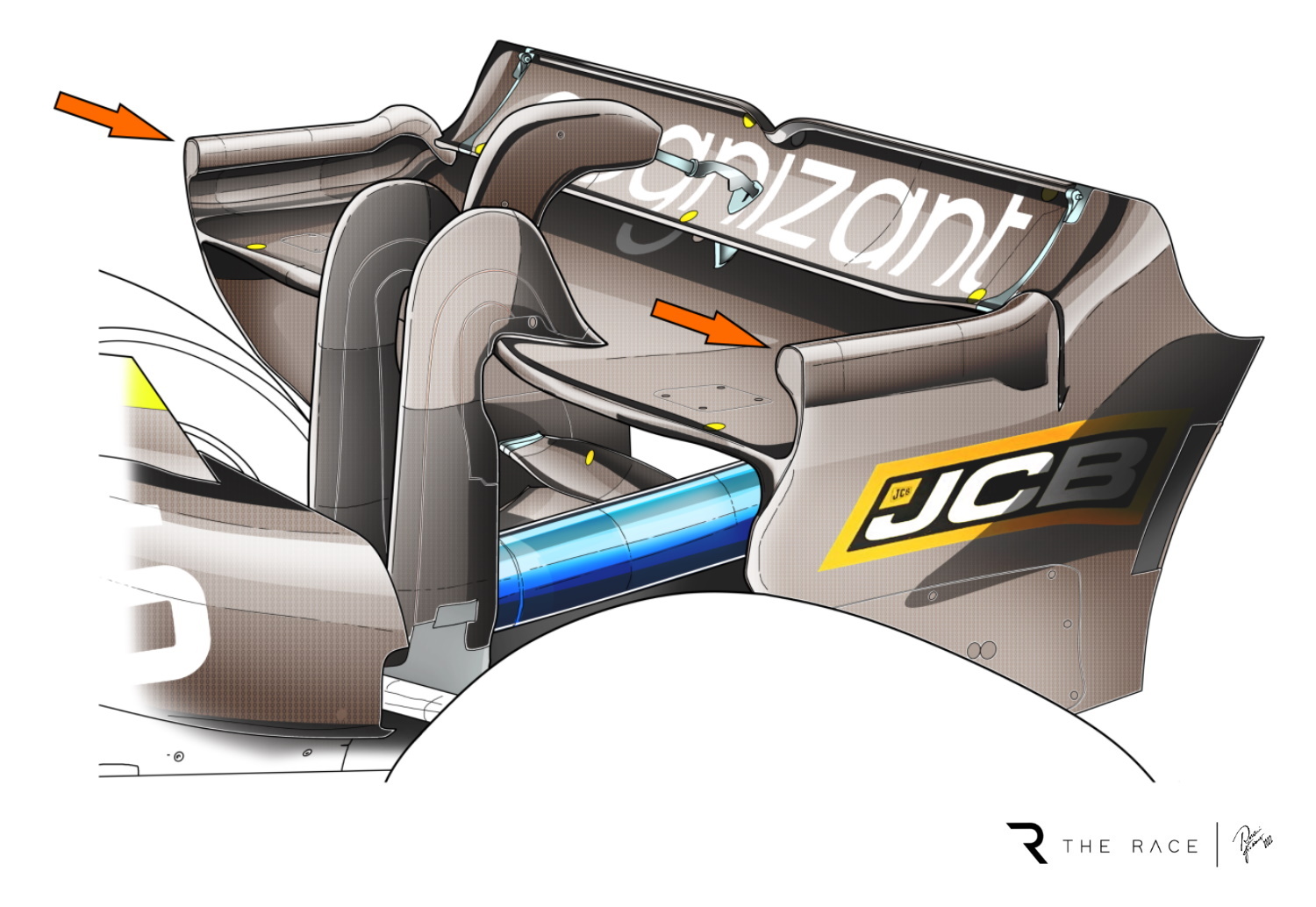
“If they’ve circumvented the intent I doubt there’s anything that can be done about that this year. Possibly for next year but I’m very sure if it’s faster, then you’ll very soon see more of them.”
McCullough suggested that given the amount of time Aston Martin spent researching the design, it could be difficult for rivals to understand quickly.
Although the design does comply with the letter of the law in the regulations, it required an innovative interpretation of the regulations to come up with the idea.
“The regulations are very restrictive and very prescribed,” said McCullough.
“The rear wing endplate, the mainplane and the tip region have lots of regulations that they all have to fulfil.
“Obviously what we’re trying to do is create downforce on the wing, we’re looking at how we know what will help our wing perform better and still comply with the regulations.
“There are many regulations that it has to comply with. It’s one of those ones where you have to fulfil so many things and not hurt so many things. I think it’s going to be quite interesting for people to understand from the outside.
“Even as a senior engineer who is sat in meetings for a long time having it explained and then fully explained again a few times, I’m like ’wow, OK, good’.
“It’s really nice to see technical innovation at a time when it’s quite hard to do that.”
GARY ANDERSON SAYS…

It took until the August break for a team to find a significant grey area to exploit in the regulations. Aston Martin has done this very well by effectively adding a vertical piece of wing in the intersection between the mainplane and the top flap to act as a more old-school endplate.
This is about containing the high pressure on the top of the wing for longer, partly by ensuring reduced transverse airflow, and therefore delivering more downforce. The challenge is doing it efficiently, which Aston Martin claims to have done well enough to intend to use this geometry across its full family of wings – subject to cost cap constraints.
Looking at the regulations, you can see why the FIA ruled it legal. The regulations are difficult to compare with designs unless you build a version of the part in CAD but what’s clear is that the mandatory radiuses that are required to blend the rear wing into the endplate are not defined in terms of location – only their shape.
The intention is to have a more direct blended join of the mainplane to the endplate, but it doesn’t have to be simply an extension of the mainplane. So Aston Martin has created this shape by bringing the mainplane up quite abruptly. You don’t have to satisfy a height rule, only the radius.
As for the objective of reducing the wake behind the car, of course Aston Martin will argue there’s not a problem. Other teams might find that’s not the case, so while some might jump onto the bandwagon, others might lobby against it being allowed in 2023.
If you look at the current high-downforce wing assembly, if the section where it joins the endplate is quite low then the more height you can use to form that endplate section, the better it will work and the more you will get from it. The only compromise is the efficiency and the height will affect the efficiency.
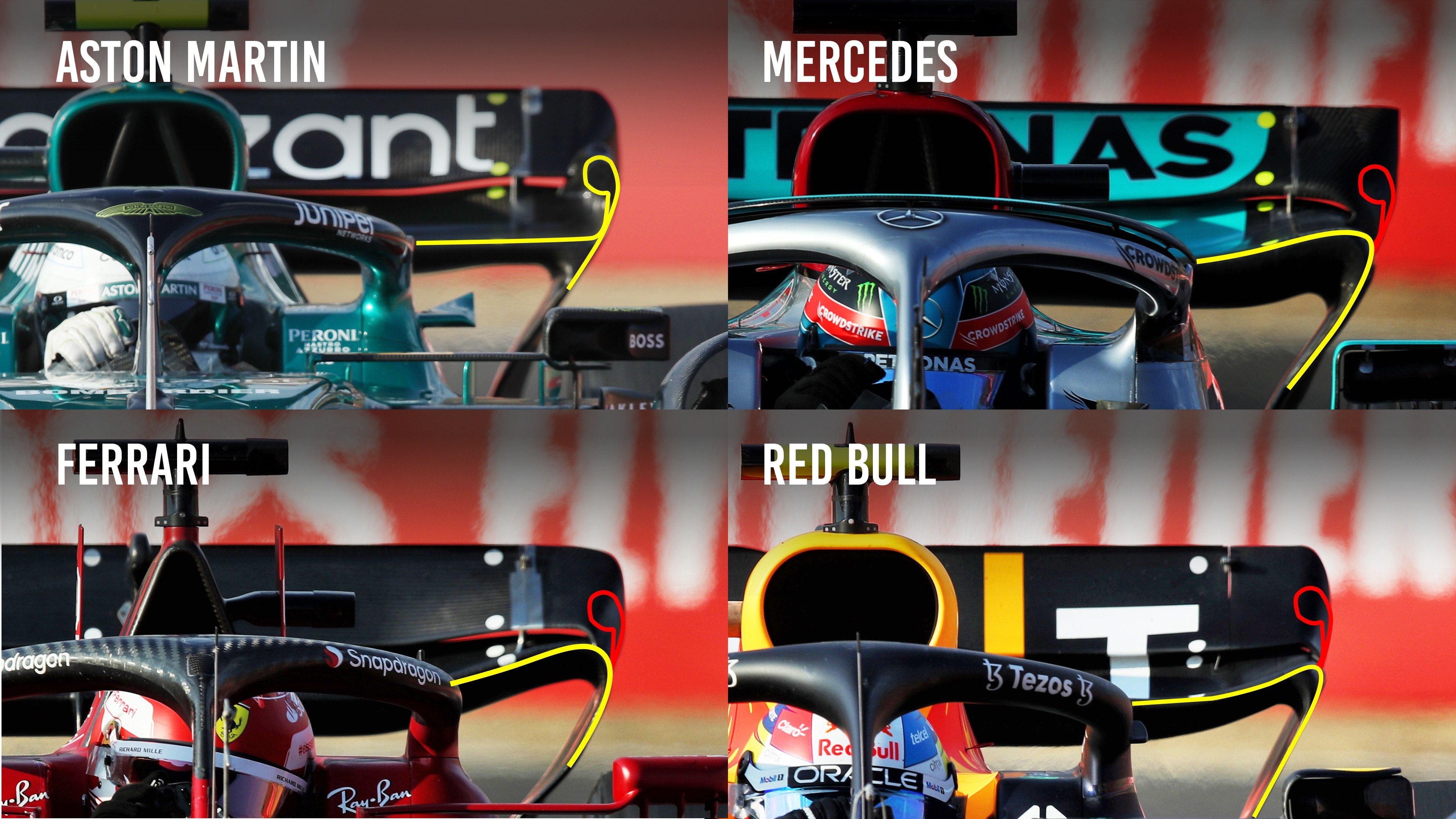
From these rough sketches applying this new endplate geometry of the top three teams to their Hungary rear wings, it looks to me that Red Bull will benefit most, Mercedes next and Ferrari least from implementing this concept. Actually, with its U-shaped rear wing design, Ferrari already incorporates some of the same thinking into its concept.
To me, a high downforce wing complying with the spirit of the rules would look like this.
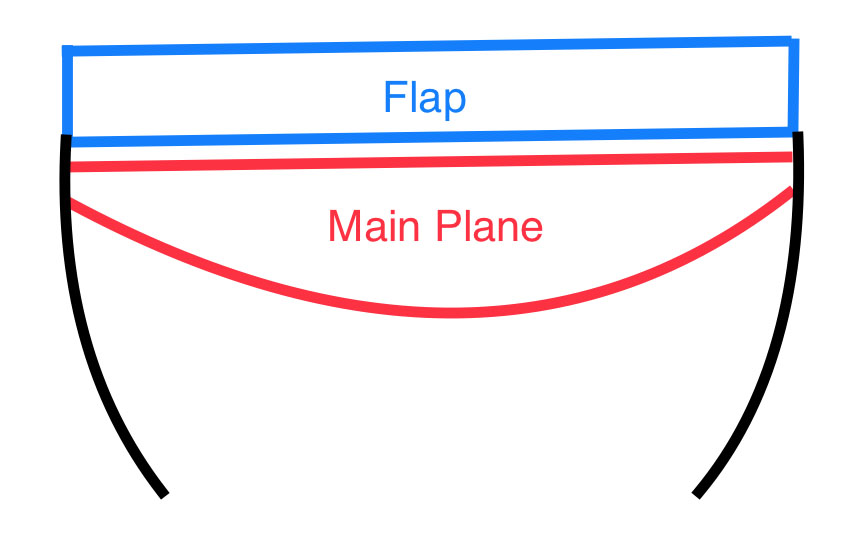
And a low-downforce wing would look like this.
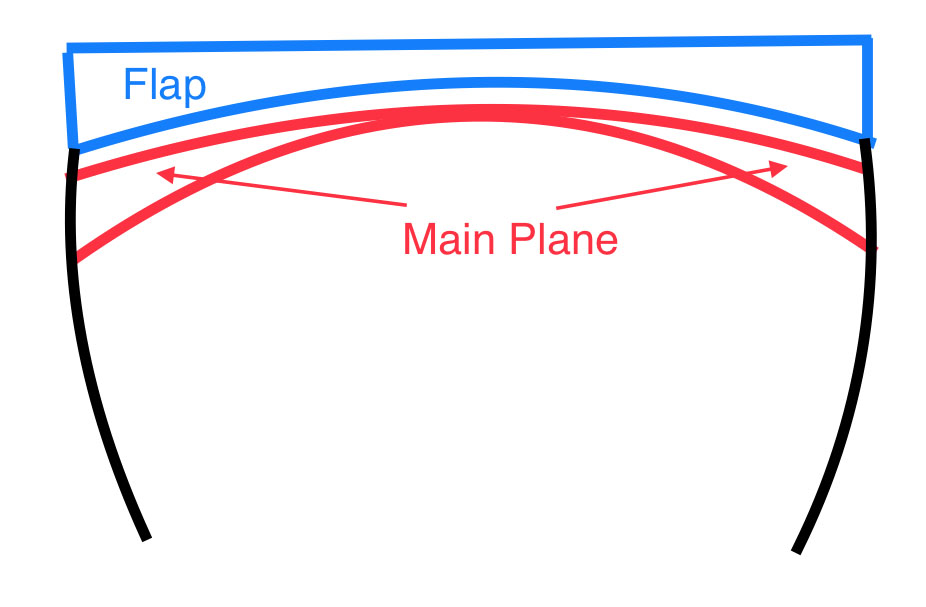
The main difference is how much flow spills off the outer upper main plane and flap-to-endplate intersection.


